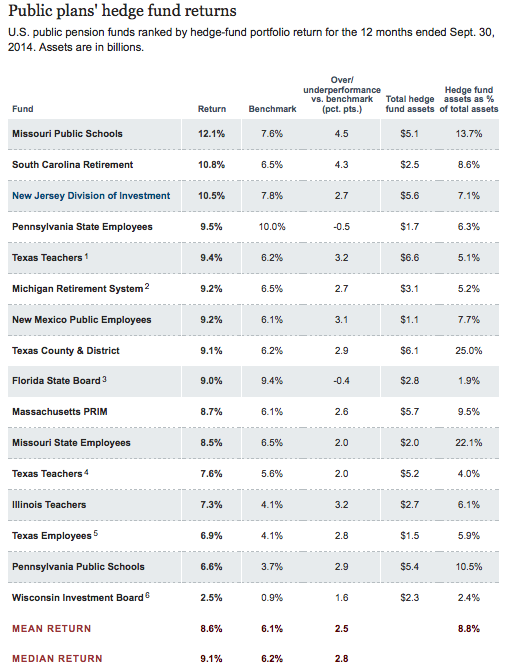A new survey, released Tuesday by Deutsche Bank, reveals that hedge fund executives expect hedge fund assets to grow by 7 percent and exceed $3 trillion in 2015, including $60 billion of net inflows.
But the majority of executives and investors surveyed – 66 percent – also recognized that hedge funds underperformed in 2014.
From the Wall Street Journal:
Investors included in the survey had on average expected returns of 8.1%, but said they only got returns of 5.3%.
[…]
However, some investors are planning to invest more in hedge funds, despite last year’s lackluster returns.
The survey said 39% of investors plan to increase allocations to hedge funds this year, including 22% who expect to increase the size of their allocations by $100 million or more.
Other key findings from the survey, from a Deutsche Bank press release:
Investors are looking for steady and predictable risk-adjusted returns – Investors risk/return expectations for traditional hedge fund products continues to come down in favor of steady and predictable performance: only 14% of respondents still target returns of more than 10% for the hedge fund portfolio, compared to 37% last year.
With this in mind, however, 40% of respondents now co-invest with hedge fund managers as a way to increase exposure to a manager’s best ideas and enhance returns. 72% of these investors plan to increase their allocation in 2015.
Investors see increasing opportunity in Asia – 30% of hedge fund respondents by AUM plan to increase investment in Asian managers over the next 12 months, up from 19% last year. Even more noteworthy is the growing percentage of investors who see opportunity in China, up to 25% from 11% by AUM, year-on-year. India is expected to be a key beneficiary of flows, with 26% of investors by AUM planning to increase exposure to the region, whereas only 4% said the same last year.
Photo jjMustang_79 via Flickr CC License





